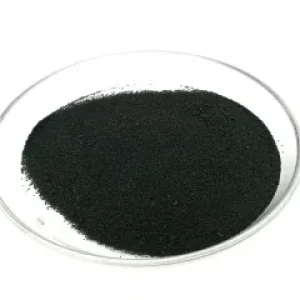Manganese carbide (MnC) is an inorganic compound known for its hardness and wear resistance. It finds application in various industries, including metallurgy and manufacturing of hard metals. Some important parameters associated with manganese carbide are:
- Chemical Formula: MnC
- Molecular Weight: Approximately 54.94 g/mol (based on the atomic weights of manganese and carbon).
- Crystal Structure: Manganese carbide typically has a cubic crystal structure, similar to other transition metal carbides.
- Density: The density of manganese carbide is not universally agreed upon due to varying synthesis methods and conditions but is generally reported around 6.7 to 7.0 g/cm³.
- Melting Point: The melting point of manganese carbide is high, as is typical for carbide materials, estimated to be over 2000°C. Precise value may vary depending on specific conditions and purity.
- Hardness: Manganese carbide exhibits high hardness, which can range significantly based on the synthesis method and the presence of impurities, but it is generally harder than most steel alloys.
- Thermal Stability: It is thermally stable under many conditions but can decompose at very high temperatures, releasing carbon.
- Electrical Conductivity: Like most carbides, manganese carbide is electrically conductive, although its conductivity may be lower compared to metallic manganese due to its ceramic-like structure.
- Synthesis: Manganese carbide is usually synthesized through carburization processes, involving heating manganese oxides or metals with a carbon source (e.g., coke, graphite) at high temperatures in a reducing atmosphere.
-
Applications: Due to its hardness and wear resistance, manganese carbide is used in the production of hard-facing coatings, cutting tools, and wear-resistant parts. It can also be used as a deoxidizer in steelmaking and as a catalyst in certain chemical reactions.
